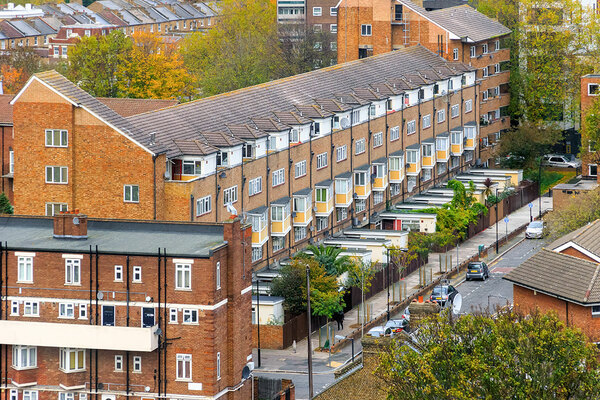You are viewing 1 of your 1 free articles
 Carol Matthews
Carol MatthewsHousing must not be forgotten when it comes to the Northern Powerhouse
The government’s Northern Powerhouse appears to remain on the agenda, but polices towards housebuilding must match the rebalancing ambition, warns Carol Matthews
“The Northern Powerhouse is a vision for joining up the North’s great towns, cities and counties, pooling their strengths, and tackling major barriers to productivity to unleash the full economic potential of the North.”
This is the government’s 2016 Northern Powerhouse strategy, which sets out a clear ambition for the North to play a key role in the UK economy by becoming better connected.
Northern local authorities have responded by undertaking the Northern Powerhouse Independent Economic Review (NPIER), in which ambitious growth objectives have been set for the whole of the North with an aim to narrow the gross value added gap between the region and rest of the country.
By 2050, this could see 4% higher productivity, creating 850,000 extra jobs.
Following this, Transport for the North (TfN) has brought out its own pan-regional sectoral plan, setting out the long-term transport investment needed to support this growth.
And there is now mounting acknowledgement of the need to align other forms of infrastructure investment at a pan-Northern level to ensure the North realises its potential.
So where does housing fit into this debate?
I currently chair Homes for the North and we are intensifying our campaign to bring housing to the forefront of efforts to rebalance the UK’s economy.
As an alliance of 17 housing associations, we recognise the North has a wealth of untapped growth potential and in order to unlock this, we need affordable homes in places where the economy will grow.
To add to a growing evidence base, we published our own research last week, undertaken in conjunction with TfN, which examines the housing ‘offer’ needed to underpin these growth ambitions in terms of numbers, timing and broad location.
The key headline is that to support the transformational growth of the North, we need to build two million homes (net) by 2050 – around 50,000 each year to 2027 and then 70,000 per annum thereafter, as the economy accelerates.
Those are probably the most ambitious housing figures we have seen for the North in a long time. An 8% step-up on 2014 to 2017 completion rates to 2027, and then a 40% step-up thereafter.
But as the research highlights, if we allow a gap to develop between economic growth and housing delivery, there is every chance that growth could be stifled.
Despite having 28% of the country’s households, the North is only building 23% of its homes. If the region continues to lose its market share of new homes, the consequences are clear.
It will also lose its share of working-age households, and the prospects of closing the economic gap will begin to fade.
So what are the prospects of this happening?
Undoubtedly, it is positive the government has finally acknowledged housing as a key component of infrastructure through the National Productivity Investment Fund.
“The truth is that the ambitions behind the government’s Northern Powerhouse and housebuilding policies are in danger of becoming dangerously out of sync”
But the North is at a huge disadvantage due to the way infrastructure projects are currently evaluated by the Treasury.
The ‘Green Book’ cost benefit analysis is king. And the difficulty of demonstrating short-term economic benefits, especially where there are significant land remediation costs, remains a major challenge.
The government is now beginning to see the objective of housing investment in a very one-dimensional way. This was evidenced by last autumn’s announcement about the targeting of Homes England funding and previous announcements about the distribution of social housing grant funding.
Crude measures of affordability – essentially a backward-looking measure which describes past market failure – are becoming decisive in allocating resources, compounded by the use of this measure in the national planning formula for establishing housing need.
Under this approach, the North is only required to build 16% of the nation’s homes, 12% less than its current market share of households.
The truth is that the ambitions behind the government’s Northern Powerhouse and housebuilding policies are in danger of becoming dangerously out of sync.
Because there is no national spatial framework to shape infrastructure investment – as observed by Lord Kerslake’s UK2070 Commission’s interim report – it has become possible for contradictory policies on economic rebalancing, housing investment and planning to co-exist.
This will simply reinforce the success of places which are already prosperous, rather than supporting more fundamental rebalancing which is at the heart of the Northern Powerhouse.
“Because there is no national spatial framework to shape infrastructure investment it has become possible for contradictory policies on economic rebalancing, housing investment and planning to co-exist”
So with the prospect of some sort of Spending Review, we need to make the case for properly aligned housing investment and planning policies to long-term economic ambition, as set out in the NPIER and the local industrial strategies currently under development. Homes for the North will be noisy about this.
This will become even more important post Brexit, where there will be huge expectations on whoever is in power to tackle the wealth and growth inequalities continuing to plague Britain – and which ultimately fuelled the desire to leave.
Carol Matthews, chief executive, Riverside; chair, Homes for the North











